Search marketing has powerful potential with infinite nuances. This digital marketing medium has an unmatched ability to reach mass users at a macro level on the basis of targeted browsing & interest. Search marketing is a demand-driven opportunity to engage in individual conversations at a mass scale. Just like the phrase implies, the ‘world wide web’ is an incredibly complex and interconnected ecosystem of users, websites, search queries, and advertising. So how and where should you start to navigate the infinite avenues of search marketing? First, consult a digital marketing agency, especially one which specializes in marketing analytics & paid media strategy like Bluetext.
A digital marketing agency can offer search marketing services that you help identify: your website user personas, what organic keywords are bringing traffic to your site, what keywords & phrases have the optimal cost-per-click (CPC), and competitive density for paid search efforts.

Automation: the Answer to Search Marketing
Basic search marketing strategy connects a user’s intent to an ideal and relevant response. Automated search marketing strategy uses automation to constantly improve and become more efficient and effective over time. A basic search strategy can be simple to set up and understand, but results may flatline without consistent nurturing. Automated search marketing can be complex and intimidating, but when set up correctly, can yield impressive and compounding results.
Some search marketers have been hesitant to embrace automation and trust algorithms and data processing power. However, avoiding the advancement of automation only hurts your strategy and puts you at a competitive disadvantage in comparison to more future-focused competitors.

Search engine tools have matured over time to provide increased control, transparency, and tangible results than ever before. Real-time automation has evolved to be the foundation of the search engine ecosystem. What was once an analog concept (imagine a physical directory) has been transformed into a dynamic digital medium. The modern search marketing experience is an always-on, cross-device experience capable of delivering almost any type of content a user is looking for.
The key aspect to keep in mind with search marketing is its dynamic nature. New features and improvements are constantly being implemented, with new queries and signals added every second. Hundreds of data points are aggregated for every interaction. The term “big data” is an understatement to summarize the sheer volume of data that can be collected and harnessed to provide the most personalized experience to users possible.
Finding the Right Search Strategy
Search marketing is not a one size fits all solution. The optimal strategy should be assessed by individual companies and use cases. To inform your strategy, it is key to fully understand how your paid or organic search terms have performed in the past. Past bidding and budget history can provide not only a baseline for improvements but insight into your audience and receptiveness to paid search advertising. If you’re not already doing so, separate campaigns out by specific audiences. This allows you to track isolated segments of customers or prospects and compare performance.
The beauty of search marketing automation is the paradox of scale and specificity. It allows companies to scale their messages and strategies to a massive audience, while simultaneously making users feel heard with personalized results.
If you’re ready to optimize your search marketing strategy and take your campaigns to the next level, contact Bluetext.
Design trends reflect the world we live in, and the past year has been tumultuous, to say the least! Below, Bluetext explores 5 branding trends and how marketing designers can make the most of them when expressing their brand identity.
1. Motion Logos
We all want our users to spend as much time as possible engaging with a brand, and adding motion to a logo will do the trick. Logo animation is a modern and dynamic way to attract clients. They hold the user’s attention, make for better storytelling, and increase brand awareness. People gloss over hundreds of brands each week, so this is the perfect way to stand out.
2. Geometric Shapes
Recently we’ve seen many brands go back to basics. Especially through the use of simple shapes, you may recognize from way back when in geometry class. Geometric shapes are a straightforward way to establish consistency across the visual identity of a brand. While appearing simple at first glance, these shapes pack a punch with the ability to express a range of emotions. Squares and rectangles feel solid and stable while circles feel unrestrained and fluid. Take a look at how we use geometric shapes to give these brands a sleek and minimalistic feel.
3. Natural Designs
Recently, designers have been looking to nature for inspiration. This includes more natural color palettes as well as gradients to represent natural light. With our daily lives inevitably turning more and more digital, more natural elements provide a refreshing contrast from bright screens and persistent notifications. Studies have shown the benefits of natural branding include stress relief and enhanced creativity, which companies & users alike know and love.
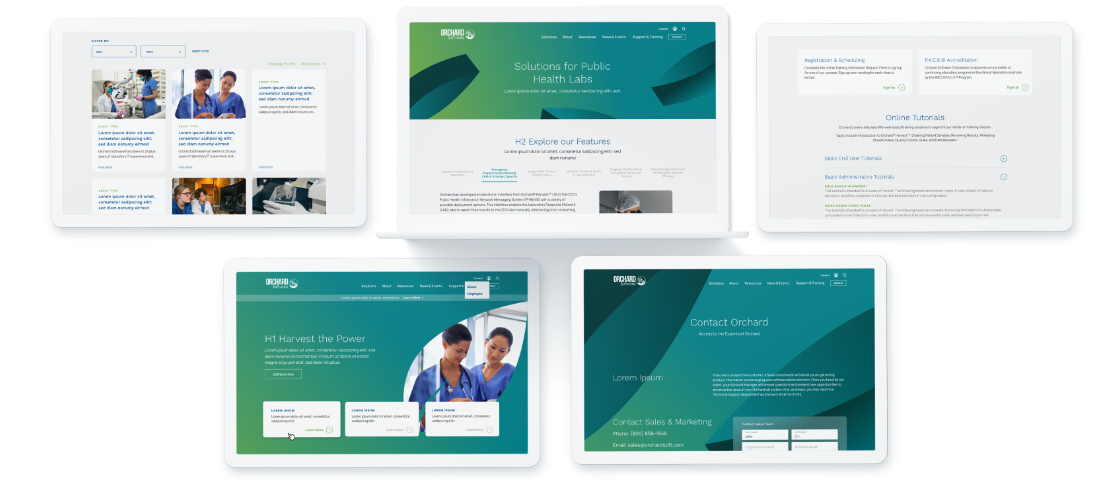
4. Simple and Classic Fonts
When choosing a font for your brand, remember simple and classic fonts can evoke nostalgia, elegance, and trustworthiness. Streamlined typography marries the widespread push towards consumer trust with recent retro trends Design and marketing agencies are moving towards a more modern and minimalistic branding, which is often complemented by simplified type. Users are finding the fine details and complex logos to be distracting from key brand messaging and attributes. Simple and classic fonts are also more compatible with reduced mobile screen sizes and digital platforms.
5. Data Visualizations
Sharing raw data holds little value to the viewer. Why? Because nobody wants to look at a bunch of numbers. Especially when quickly scanning a webpage or collateral asset, key statistics often get overlooked. Data visualizations are not only more visually appealing, but they provide a bigger picture for the viewer. Attractively branded diagrams and illustrations naturally draw the eye and focus attention to the story your statistics tell. Improving data visualization is an easy way to make the user stop scrolling and absorb your brand’s value and relevance.
Branding has the power to instill trust and excitement in any audience. Take advantage of these upcoming trends to increase user attention and spread brand awareness this year. Need help? Bluetext is here to give you the tools you need to develop or enhance your brand. Contact us today.
When it comes to marketing, knowing your customer and their needs is crucial. To truly make an impact, ads need to be not only well-targeted but more importantly, meaningfully tailored to address specific customer needs at the right place and at the right time in their decision-making process. Effective advertising involves a keen awareness of the conversion funnel and customer considerations at every stage.
Ads have to first grab the attention of the target audience, but also communicate the customer value that the product or service delivers. The most impactful ads go beyond just stating customer benefits – they forge a connection between the customer and the brand that continues throughout the customer journey. Ideally, the ad captures enough attention to generate interest and sustains that interest to create longer-term loyalty. Meeting customers at the correct place and time while simultaneously delivering a meaningful and resonant message is a delicate balance. These nuances have propelled dynamic advertising automation to the forefront of advertising strategies across industries.
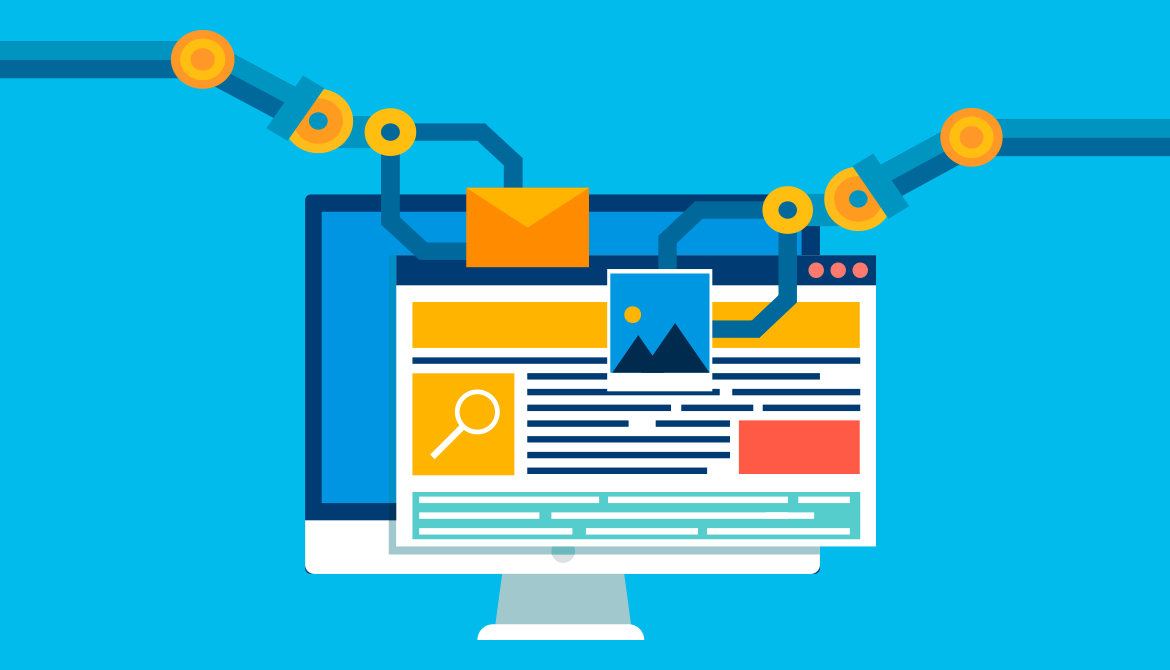
Anyone who regularly browses the internet is presumably familiar with personalized advertising. For example, if you decide to browse online for a new pair of sneakers, you likely are going to see ads for sneaker brands populating your browser soon after — it’s not a coincidence! Using automation to create “meaningful” ads goes a step beyond this kind of personalization. It culminates in advertising that acknowledges underlying customer values. For example, the sneaker ad and messaging might change based on whether the customer values a long-lasting and practical shoe or a sleek and fashionable one. How do we know these preferences? Well, maybe this customer has previously searched “highest rated sneakers” or “durable running sneakers”. This action signifies a preference for practicality, as opposed to a “sneaker trends 2021” search.
The automation of meaningful ads synthesizes customer behavior, customer preferences, and personal values to deliver a more effective and less bothersome version of the digital ads we’ve grown accustomed to seeing and often ignore. Advertising automation creates an experience that is helpful as well as enjoyable for the customer.
Conceptually, meaningful ads should be the answer many brands are looking for when trying to connect to their target customer, however, does it work in practice? According to this study, the implementation of meaningful ads caused purchase intent to increase by 15% and click-through rates to increase by 30%. So, not only does meaningful advertising forge stronger brand connections, it also yields tangible and quantifiable results. The same study also found that less than 6% of users had a negative reaction to the level of personalization used in these meaningful ads. This tells us that so long as the ad facilitates a helpful and positive brand experience, the customer will be happy to see their preferences reflected in your ads.
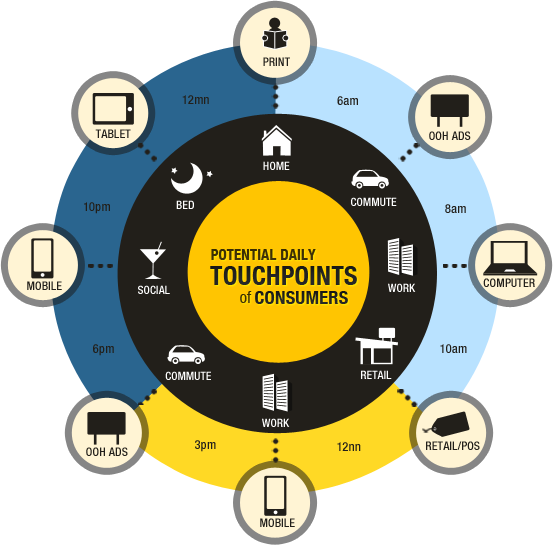
While this data is based on B2C customer behavior, the same mentality can and should be applied when considering B2B ad campaigns. In all cases, ads are speaking to human beings with the capacity to form emotional connections to brands, and the automation of meaningful ads allows that crucial process to occur at scale. All of these insights reinforce one consequential truth – knowing your customer, their needs, their values, and why that matters at each stage of the customer journey is the most important piece of the advertising puzzle. Automating meaningful ads puts that concept into practice and the results will speak for themselves.
Ready for quantifiable advertising success? The first step is analyzing your user personas and unique needs. A marketing analytics agency can help you identify these groups, and find critical insights into their online behaviors. A digital agency can then help turn those insights into actions, and place targeted advertisements that yield conversions.
Contact Bluetext if you’re interested in maximizing your advertising dollars towards real success.
This post is a collaborative effort with Ross Katz and our partners at CorrDyn, a data-driven consultancy that helps enable scalable growth. CorrDyn’s data expertise combined with Bluetext’s command of marketing provides an additional opportunity to segment and target in the B2G marketplace.
Where is the next great opportunity for your business? Well, government agencies for one. According to USAspending.gov, approximately five trillion dollars is being allocated to government agencies in Fiscal Year 2021, with over $1 trillion going to Health and Human Services alone. These agencies are growing, and their needs for hardware, software, and services are increasing along with them.
If you are already marketing to “the government,” you understand that winning government contracts is a long sales cycle. The opportunity-to-award process might be 90 days on average, but the lead-up to those 90 days is a critical period where the deal is won or lost. During those 90 days, all data gathering and relationship-building you have done over the previous 2-5 years comes to fruition. So what exactly sets the winning businesses apart? Memorability. Government contracting is a long game, built on endurance. After many years of B2G marketing experience, Bluetext is here to break down what gets your foot in the door and sustains success in business to government marketing.

Division of time between positioning your company for success with government agencies and bidding on specific contract awards.
Winning government contracts is not as simple as pointing your existing sales and marketing engine at a new target. “The government” is not a monolithic entity, and even “the agency” needs to be treated with more nuance: It is composed of dozens of sub-entities that make independent decisions based on independent decision criteria. In enterprise sales, winning over a single decision-maker can often close the deal. In government contracts, groups of stakeholders across the agency influence which business wins the contract, even if a single decision-maker completes the signs off. So instead of persuading a single stakeholder, B2G companies are tasked with winning over multiple groups, at multiple different stages and occasions. Hence, why brand endurance is critical.
Complicating matters further, traditional channels for establishing relationships with government agencies have been disrupted by the pandemic. Most in-person conferences and meetings will not occur this year, and some will remain online for the foreseeable future. Government stakeholders are more geographically distributed and digitally dependent than ever.
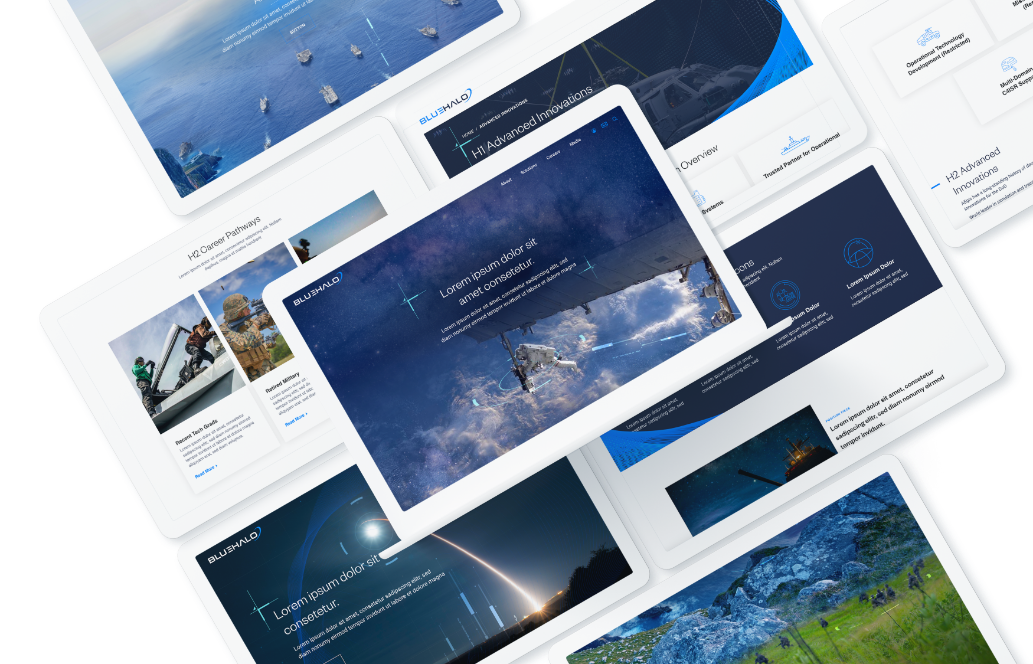
The tides have shifted. Once an industry that operated in an isolated siloe of its own rules, business seeking government contracts must adopt new, digital marketing initiatives to effectively position themselves.B2G companies should leverage the data-driven, digital marketing tools developed for B2C companies to segment and personalize their approach to agency stakeholders. B2G is too broad a term, and even business-to-agency (B2A) abstracts away from the customer understanding your company needs to have to win contracts consistently. A business-to-stakeholder (B2S) marketing approach is what your company needs to win consistently.
To succeed in data-driven B2S marketing, we explore:
- What success looks like in B2S
- The lifecycle of data-driven stakeholder cultivation
- The division of labor between internal departments for successful execution of that lifecycle.
Begin with the End Goal in Mind
Before we determine how to develop our marketing and sales pipeline, we need to define success. Agency leadership and stakeholders can frequently change, at a minimum, with every new government administration.
Therefore, we prioritize targets that will allow your company to evolve as agency priorities and decision-makers change. Your company must first make its impression as a strong, reputable industry player, whilst also remaining top of mind through consistent brand recognition and relevant thought leadership content. These are the characteristics of a successful B2A marketing approach:
- Your company is considered a thought leader in the space where the agency is procuring products and services.
- Government agency stakeholders regularly call your company to ask your opinion on upcoming agency initiatives, product and service specifications, RFPs, and contract awards. Occasionally, you are invited to co-craft the RFP in ways that position your company to win.
- You are aware of the potential for shifting priorities months before those shifts occur.
- Information on the priorities and interests of your agency stakeholders is filtering directly to your sales team, who pass relevant information to content creators, who are crafting bespoke campaigns that reach your contacts as related conversations occur internally at the agencies.
- Business development staff follow up on that content with meaningful conversations with key stakeholders. Those conversations assure your agency contacts that your company is focused on their individual and organizational priorities.
- You have both breadth and depth of relationships at the agency: deep relationships with key stakeholders and associations across the organization. A few people leaving the agency does not impact your company’s ability to retain the status and relationships described above.
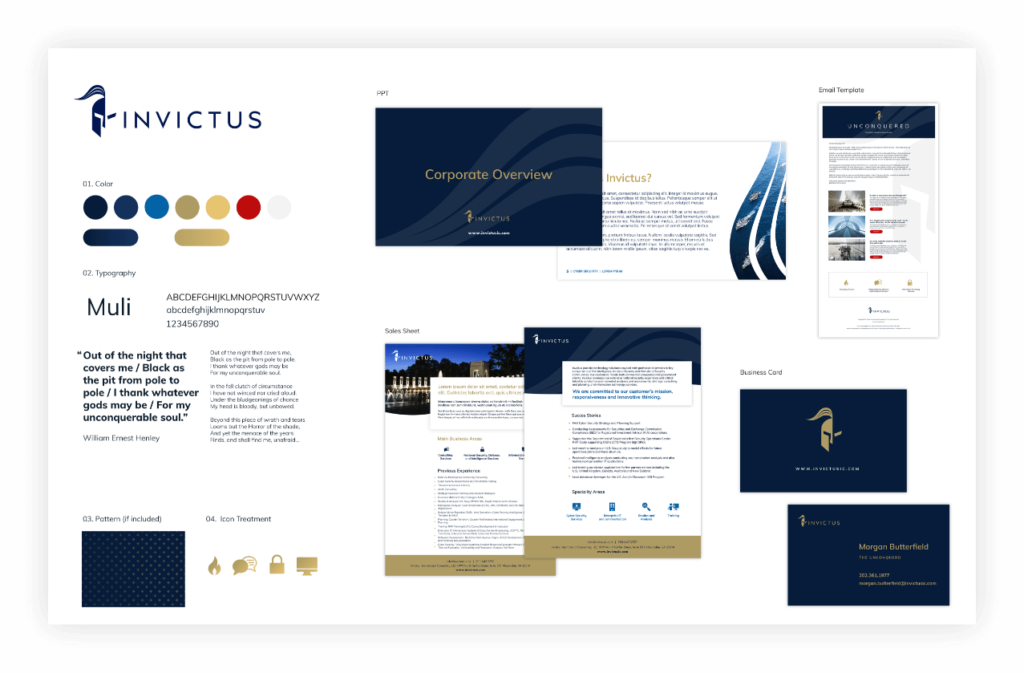
Does your content dress the part? A sure sign of a reputable industry player is professionally branded collateral assets, such as Invictus
The Stakeholder Development Lifecycle
In order to accomplish those goals, start by treating the agency as a combination of individual stakeholders and stakeholder groups. Organize your company’s sales and marketing approach around the Stakeholder Development Lifecycle for B2A marketing, which includes:
- Acquiring Stakeholder Contacts: Start with breadth. In order for your company to establish deep relationships in an agency, you need to acquire as many points of contact as possible. Target ads based on geolocation to get in front of as many relevant stakeholders as possible. Get their title, contact information, and social media presence. Build from there.
- Monitoring Stakeholder Contacts: Capture social media posts, digital content interaction (with a privacy-first approach of course), conference attendance, and internal agency relationship information from contacts over time so that you can understand and target their needs, interests, and priorities.
- Segmenting Stakeholder Contacts: Based on a contact’s position in the organization and their activities and expressed perspectives, segment them into groups that should be targeted and messaged together consistently.
- Nurturing Stakeholder Contacts: Develop marketing, business development, and sales outreach that messages contacts according to their segment and the depth of their relationship with your company. Build a customer journey map that helps you identify what messages move contacts deeper into understanding your company’s value proposition and believing in it.
- Fostering Stakeholder Promoters: Identify your company’s highest value and strongest promoting contacts as the champions your company needs to win individual contract awards. Prioritize according to how naturally the contact aligns with your company’s offerings and how important the contact is to your company’s long-term relationship with the agency.
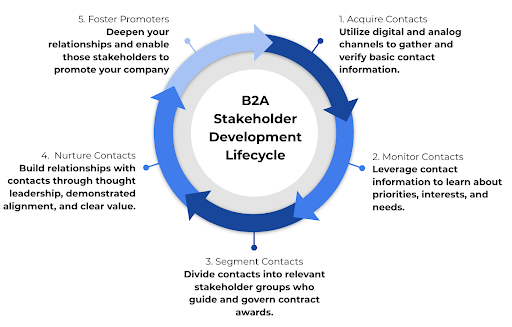
Stakeholder Development Lifecycle for B2A Marketing
Considering Stakeholder Segments
Within each agency, there are groups of stakeholders with priorities that will govern how well your company competes in a given contract award. The priorities of the agency can be efficiently stored within a single person’s head. But understanding the priorities of each stakeholder within each stakeholder group requires a data acquisition and data management approach that efficiently captures, aggregates, and generates insights about how your company is positioned with regard to that stakeholder group and the awards they oversee.
To understand how stakeholder priorities can differ, we use an example company, CyberSample, selling cybersecurity solutions to the Department of Transportation (DoT).
If CyberSample were to interface only with the DoT’s contract oversight and contract administration team, they would get a simplified and sanitized understanding of what governs the contract award. They would miss the critical details and priorities needed to assuage the concerns of each stakeholder group.
If they were to interface only with agency leadership or technology leadership, they would get a sense of broad organizational priorities and gain credibility from being introduced by internal power brokers. However, unless they leverage those introductions to dig deeper into specific needs surrounding an award, CyberSample’s team is unlikely to understand the tactical needs of technology implementers, users, or initiative leaders.
Example stakeholder groups and their corresponding priorities for CyberSample are provided in the figure below.

CyberSample stakeholder segments and their priorities. Segments and priorities should be validated by marketing interactions, public discussions, and business development and sales conversations.
Within each agency and with regard to each industry vertical selling into the agency, there will be a different set of stakeholder groups that influence decision-making. Your first task is to gather the intelligence needed to identify, segment, and target each stakeholder group. Taking a card from the B2C marketing playbook, it’s very similar to traditional customer personas, focus groups, data collection and tracking. Businesses that open their minds to alternative digital marketing and outreach methods are putting themselves miles ahead of the competition. This will allow you to move from a broad B2A approach to a more focused B2S methodology.
Executing on B2S Marketing with a Data-Driven Approach
For the approach described above to be successfully executed, each of your internal departments needs to coordinate. That coordination is built on a shared understanding of the agency landscape. A shared understanding requires a consistent and comprehensive approach to data collection, manipulation, and utilization.
Within the Contact Acquisition phase, your company’s Marketing and Content teams need to develop top-of-the-funnel landing pages, emails, webinars, white papers, and presentations that make agency contacts want to opt-in to a relationship with your company. Your Technology team needs to have the systems in place to capture customer interactions from your web properties and events, as well as to trigger intelligent outreach based on those interactions. Your Data team needs to clean and integrate the information captured from these interactions so that intelligence can filter back to Marketing, Content, Business Development, and Sales.
A summary of your company’s information needs is provided in the table below.
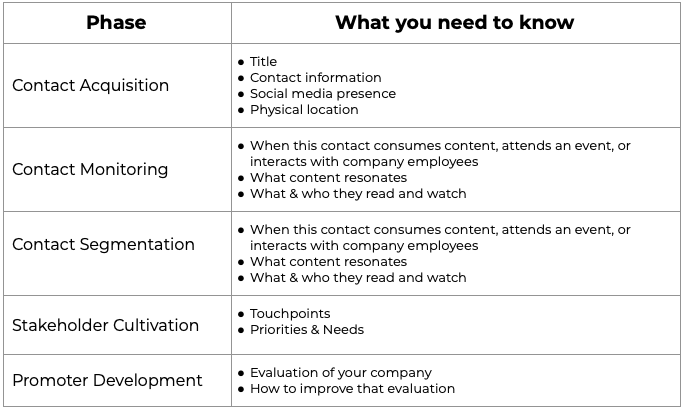
Once your company has acquired contacts and is actively monitoring activity, your Marketing, Content, and Business Development teams need to know what messages are resonating with agency stakeholders, and who are credible thought leaders through which to filter those messages. That provides the platform for new content development and for influencer marketing via the people who already have your stakeholders’ attention.
Those messages also enable the Business Development team to schedule meetings and start having conversations with stakeholders about their individual priorities and the interaction between those priorities and the organization at large. Your company can surface conflicts between agency groups to discover how to navigate potential barriers to contract awards.
Meanwhile, your Marketing team can deepen relationships with agency stakeholders through increasingly targeted messaging that moves those stakeholders closer to being promoters of your business. Your Product & Service team can ensure that your product or service value proposition is aligned with the priorities of each stakeholder group as you enter the RFP process. Your Business Development and Sales teams can focus on the individual needs of key stakeholders and customize your messaging to those stakeholders’ needs.
It is the job of your Data team to ensure that each department has the intelligence they need, when and where they need it, to effectively cultivate those relationships and respond with well-honed sales and marketing messages.
Below, we illustrate the division of labor between different departments throughout the Stakeholder Development Lifecycle.
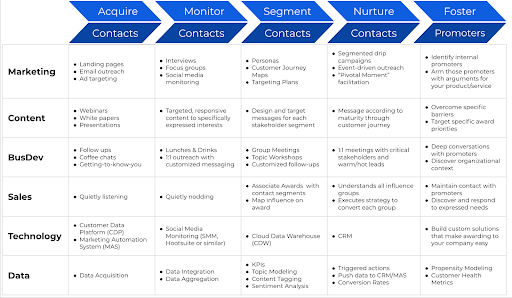
Division of Labor Between Departments for the Stakeholder Development Lifecycle
With an improved strategic approach to B2A marketing, focusing directly on the stakeholders, and a commitment to building the infrastructure and processes to gather and interpret data about them, your company will be better positioned to win government contracts for many years to come. We understand that building the Stakeholder Development Lifecycle from the ground up may be daunting, which is why Bluetext and CorrDyn are partnering to help B2A companies build the systems, processes, and brand assets needed to accelerate your path to agency contract awards.
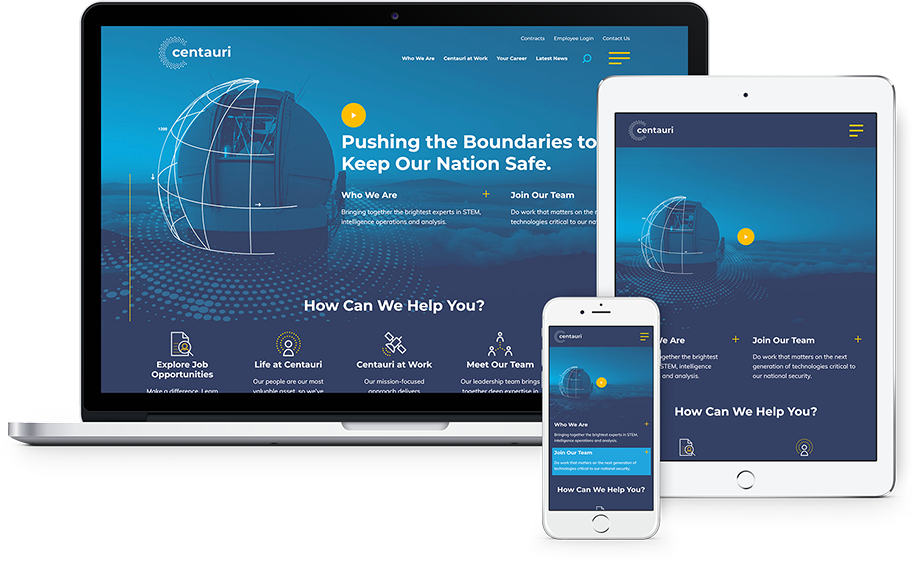
Centauri utilized Bluetext’s services to launch a new name, brand, and website following a merger. Their go-to-market strategy succeeded in winning new awards, company recruits, and even an acquisition from KBR. Check out how Bluetext has set up more brands for M&A success.
How Do I Get Started?
For the approach described above to be successfully executed, each of your internal departments needs to coordinate. That coordination is built on a shared understanding of the landscape within the agency. A shared understanding requires a consistent and comprehensive approach to data collection, manipulation, and utilization.
The starting point depends on the maturity of your company, specifically in the Data and Marketing Teams. For those with fully staffed teams that can execute, you can follow the plan outlined in this post.
The Data Team holds responsibility for timely, reliable access to data to allow the MarCom Team to execute and your other teams to act on the results. If you are still attempting to develop the overall strategy and buy-in from departmental or executive leadership, or if you don’t have the confidence in the systems in place, Bluetext and CorrDyn can help you move forward:
- Data Summit: This workshop is customized to your specific requirements, but is designed to bring together stakeholders from the relevant departments to educate them on the goals of the initiative, gather input from various departments about any concerns or limitations, and move toward a consensus regarding the strategic approach that will improve your targeted marketing efforts.
- Data & Systems Assessment: For those who have made the decision to move forward with improved data-driven marketing, it is critical to have confidence in your data systems (reliability, scalability, and accessibility), data governance (security and policies), and ROI (time to value and budget). Our assessment process addresses all of these aspects and culminates with the development and delivery of a Data Infrastructure and Capabilities Roadmap (DICR). The DICR includes the findings of the assessment, strategic vision, proposed infrastructure solution, and an implementation plan (typically phased).
With the organizational buy-in in place, and you have the data and reliable systems in place, but require assistance in execution in the marketing and content, working with industry-leading partners like Bluetext will allow you to start executing your strategy.
Bluetext brings the marketing and business development expertise needed to elevate your targeting and messaging. CorrDyn brings the data expertise needed to make your web, marketing, sales, and business development data work for you. Reach out to start the conversation about how we can position your company to succeed with government agency marketing and business development.
You’ve spent months working with a video design & production company to write the perfect script, find the right voice-over actor, polish your storyboard, and so much more. Now, you have a video that captures your brand essence and you want users to see it. So what’s the best way to get impressions on your video? As a premier video design & production company, we know there are countless options for getting your video in front of users.
With over 2 billion users and more than a billion hours of videos watched daily, YouTube is one of the best ways to ensure your target audience finds the video content you’ve produced. To truly understand just how powerful YouTube can be as a platform, it’s important to understand the basics. Keep reading to learn more about YouTube advertising and it’s different kinds of ad formats.
What Type of YouTube Ads are There?
YouTube Ads are controlled through the Google Ads platform, allowing advertisers to maximize their reach. Through YouTube Ads, you can decide whether you want your video to appear before, during, or after the video a user is watching. The six primary ways you can advertise through YouTube are:
- Skippable in-stream ads
- Non-skippable in-stream ads
- Video discovery ads
- Bumper ads
- Masthead ads
- Outstream Ads
Let’s take a look at each one.
Skippable In-Stream Ads
If your goal is to drive website traffic and/or conversions, this is a great option for you.
Skippable video ads play before, during, or after a video and users have the option to skip the ad after five seconds. As such, advertisers are only charged when a viewer watches 30 seconds of the video (or the full duration of the video if it’s shorter than 30 seconds) or interacts with the video. With this in mind, it’s important to keep your ad short, sweet and to the point. Don’t bury your main points 25 seconds in the video, but rather front load with interesting content that hooks a user and encourages that conversion action. Alongside skippable video ads, advertisers have the option to display a companion banner in the top right and a video overlay CTA button in the left. Needless to say, skippable video ads can be great for a lot of reasons.
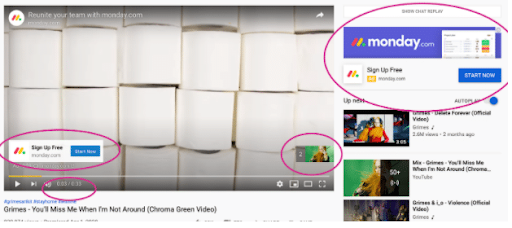
Non-Skippable In-Stream Ads
Given the nature of non-skippable in-stream ads, this is a great format if you’re aiming for a lift in brand awareness. With 76% of users skipping ads out of habit, it can be worthwhile to run ads that don’t have an option to be skipped. However, with non-skippable ads, you need to be confident that your video is strong enough to hold your audience’s attention for the full 15 seconds. Given that viewers have to watch the full video, these ads typically have higher CPMs than other formats on YouTube.
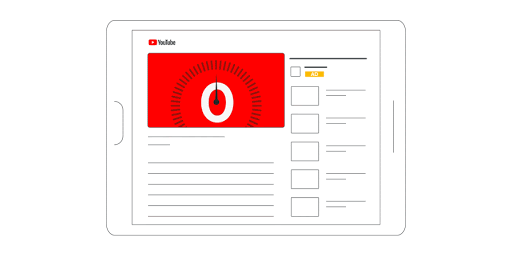
Video Discovery Ads
Video Discovery ads are best for product and brand consideration. Just like Google paid search ads, YouTube Discovery Ads display alongside organic YouTube search results. As a more native approach, if your video appears relevant to users, people are more likely to watch it. Alongside a thumbnail of the video, these ads allow for three lines of text to help provide users with more context and information. The text opportunity is great, because it ensures that a user consumes some brand messaging even if the video isn’t played. Furthermore, in the best case scenario, the description text further encourages the video play action, and eventually results in a lead or conversion.
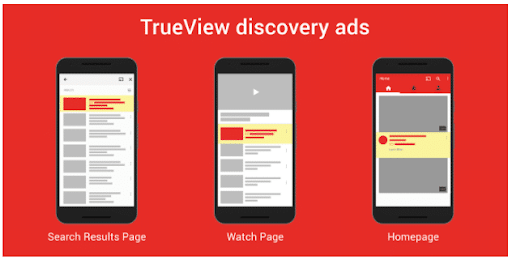
Bumper Video Ads
Are you looking to capture viewers with a short, memorable message? Then bumper ads are for you! At only 6 seconds, bumper ads are a quick, snappy way to leave viewers wanting more. Billed on a CPM basis, these ads are best for building brand awareness, given that they are also non-skippable.
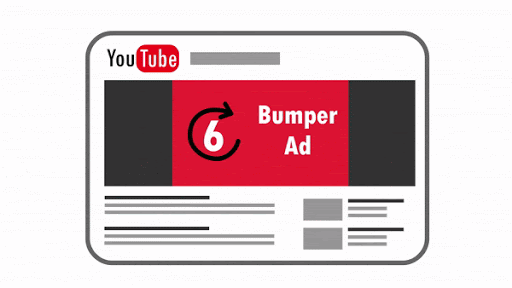
Masthead Ads
Masthead ads are a fantastic way to drive awareness for a new product, service, or event for a short period of time (i.e. a trade show). While most YouTube ads are purchased through the Google Ads auction, masthead ads are bought on a reservation basis. By buying on a reservation basis, masthead ads give you more control over your budget (buy impressions at a fixed rate), greater visibility (guarantee the placement of your ad), and better brand awareness (reach a wide audience).
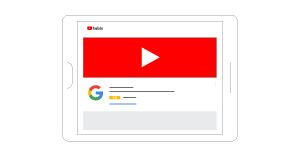
Outstream Ads
Outstream ads are another great tactic for boosting brand awareness and bringing users to your site. With over 40% of YouTube viewers watching content on their mobile devices, a mobile-first ad campaign is a smart approach. Outstream ads, for example, are mobile-only and play on partner sites and apps outside of YouTube. While this might seem counterintuitive at first, this actually allows advertisers to expand their reach to publishers such as CNN and Forbes. In addition, users are more likely to view outstream video ads by over 25% when compared to instream ads.
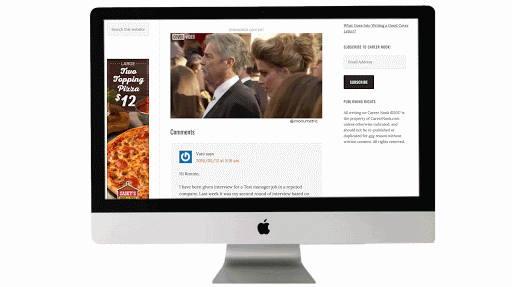
Knowing that there are so many options for YouTube ads, it can sometimes be overwhelming to know what format to select. It’s important to start with your goal, and work backward from there. Better yet, consult a digital marketing agency for advice on the best ad format and strategy for your business. If you’re interested in working with a video design & production company to create your next video or need help figuring out how to promote your videos, contact us here!
It’s no secret that any business striving for success has to find a way to differentiate themselves from their competition. The same goes for companies operating in the government contracting arena, where players big, small, old, and new, are all looking for ways to get their messages into the market uniquely.
I know what you’re thinking… so much easier said than done, right? Well, what if I told you that a solid and effective brand story is one of the most critical ingredients of a government contractor’s success? And, what if I told you that as a government contracting marketing expert that specializes in brand storytelling, Bluetext can help you significantly improve your market standing and brand goals?
Now that I’ve got your attention, keep reading to learn more about why brand storytelling is so critical in government contracting, and just what Bluetext can do for you.
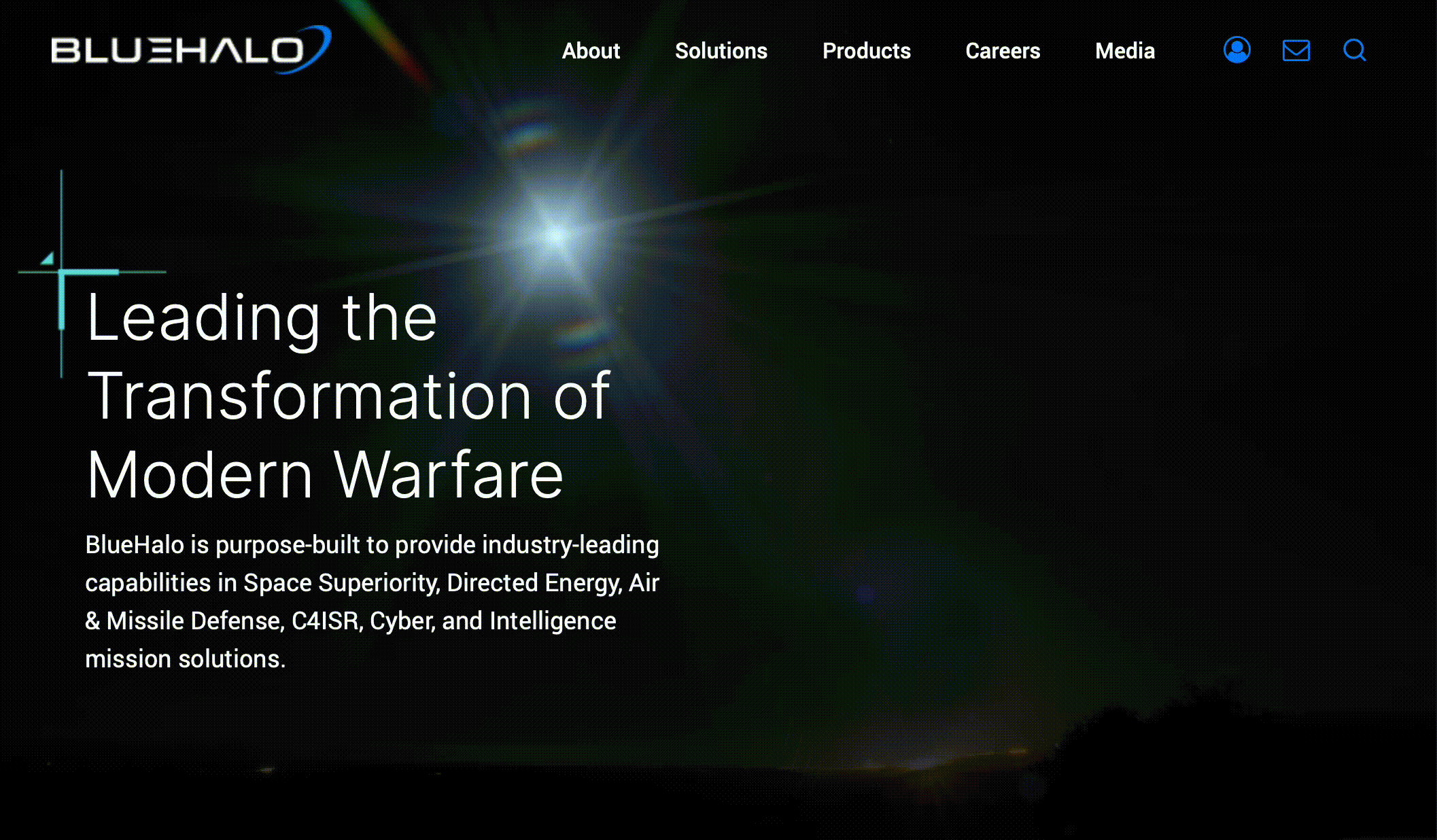
So, why exactly should I care about brand storytelling?
The reality of the situation is that without a strong brand story, many government services providers look exactly alike. Strong brand storytelling can make a government contractor stand out and come to stand for something valuable to all of the stakeholders. In a trust-based industry like government contracting, a resonant message can both attract and motivate buyers to conduct business with your company.
In a world so focused on numbers, proposals, minimizing risk and technical requirements, it can be easy to forget that your buyers are still human! Yes, they want to understand your company, services, and products and see those fancy charts and data, but they also want to relate. Most proposals are going to have very similar data, and after so many they all seem the same. What won’t be the same is the emotion tied to your company‘s proposal — if you tell your story right. Customers need to recognize your brand and trust that you are the right organization to fulfill their contracts in the long term.
That’s where brand storytelling comes in to help.
Studies show that humans actually rely heavily on our subconscious feelings to make decisions and that we respond positively to the impact of stories. That’s why storytelling is such a powerful tool to help evoke positive emotions around your brand and facilitate connections with your audience. When your audience connects with your story, they will pay attention longer, want to learn more, and be more trusting of your brand.
Storytelling that is consistent with your brand allows your audience to see the how and why behind your products or services. It allows them to be enticed by your company without being explicitly aware that they were in a sales pitch. Across any industry, tolerance is low for gimmicky sales ploys. However, there is attention bandwidth to be gained for a corporate responsibility and clear values. Companies who get this right are companies who win government contracts.
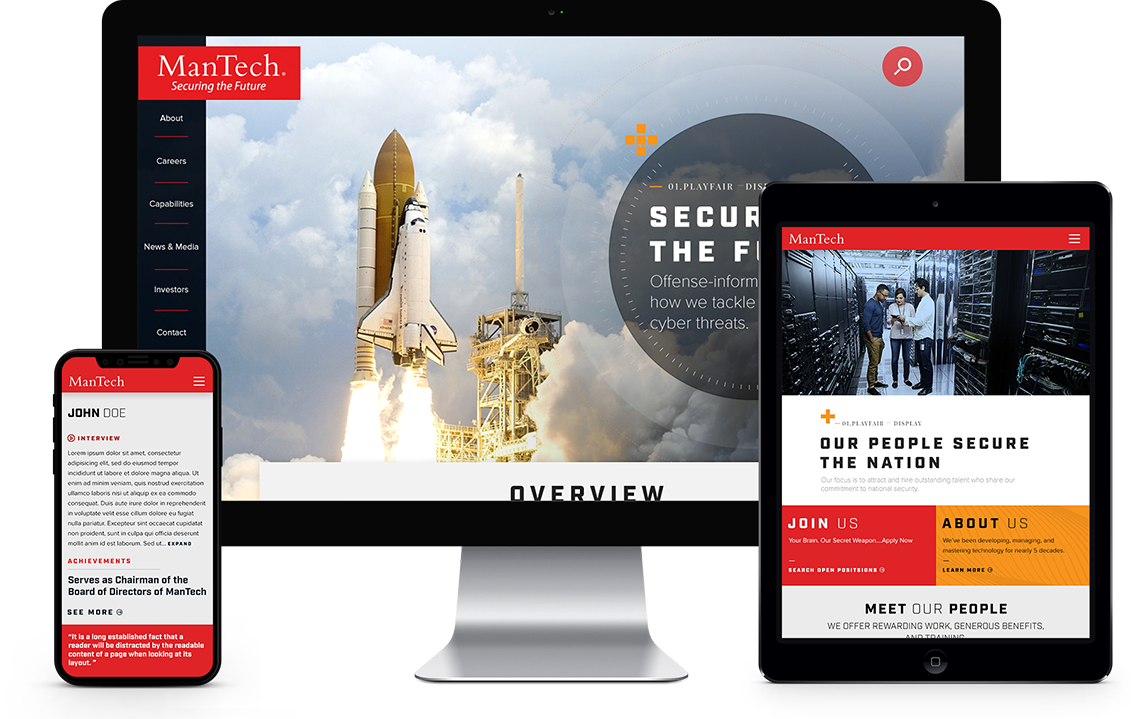
Okay, I’m in. But how do I get my brand storytelling right?
Enter: Bluetext.
As a top brand development agency, we’ve worked across industries to learn the most effective ways to tell unique brand stories. We have worked with countless government contracting firms to help them tell their stories in a way that captivates audiences, leads to real, tangible business results, and establishes them as a trusted partner who can solve real-world problems.
Check out a few of our favorite examples of storytelling in government contracting below:
 Convinced? Contact Us if you’re ready to work with a government contracting marketing firm to help tell your story.
Convinced? Contact Us if you’re ready to work with a government contracting marketing firm to help tell your story.
The past decade has seen a spike in mergers and acquisitions, as conglomeration and consolidation seem to be the trend of the future. Healthcare, technology and media-related brands have experienced the most consolidation. Mergers and acquisitions offer attractive opportunities to consolidate talent, infrastructure and relationships, but an equal number of challenges. Luckily, Bluetext has experience with many clients seeking digital marketing and branding guidance either after a successful M&A event, or with an eye to the future of the company and it’s M&A potential. A consistent lesson learned from our clients across a wide variety of industries is the importance of branding, especially in the early M&A planning.
WHY a company should rebrand after an acquisition
One of the key challenges includes branding, which when done correctly creates a harmonious industry presence built for long term success. But when branding is neglected, it runs the risk of introducing new problems that might damage a firm’s reputation or open up rifts between internal teams. While key stakeholders tend to focus on talent, business operations or business development, branding can fall to the back burner. Though as an experienced brand marketing agency, Bluetext knows the risk of deprioritizing corporate messaging & branding. Without unified brand creative and messages, a newly consolidated company lacks the foundation and united front to be successful in the marketplace and internally.
Often newly merged companies decide to either adopt one existing brand, or decide to create a new brand for a fresh look when they go to market. This decision is crucial to make early on, as it sets the tone for the entire process. While there are pros and cons to both avenues, Bluetext has observed companies that opt to create a new brand identity and corporate messaging often experience higher excitement, zeal and attention with the new company announcement. A blank slate for the brand story, key messages and creative visuals gives all stakeholders the chance to weigh in and feel heard in the process. The end result is a new brand that all internal stakeholders feel connected to and proud to represent both digitally via social media and physically via corporate swag.
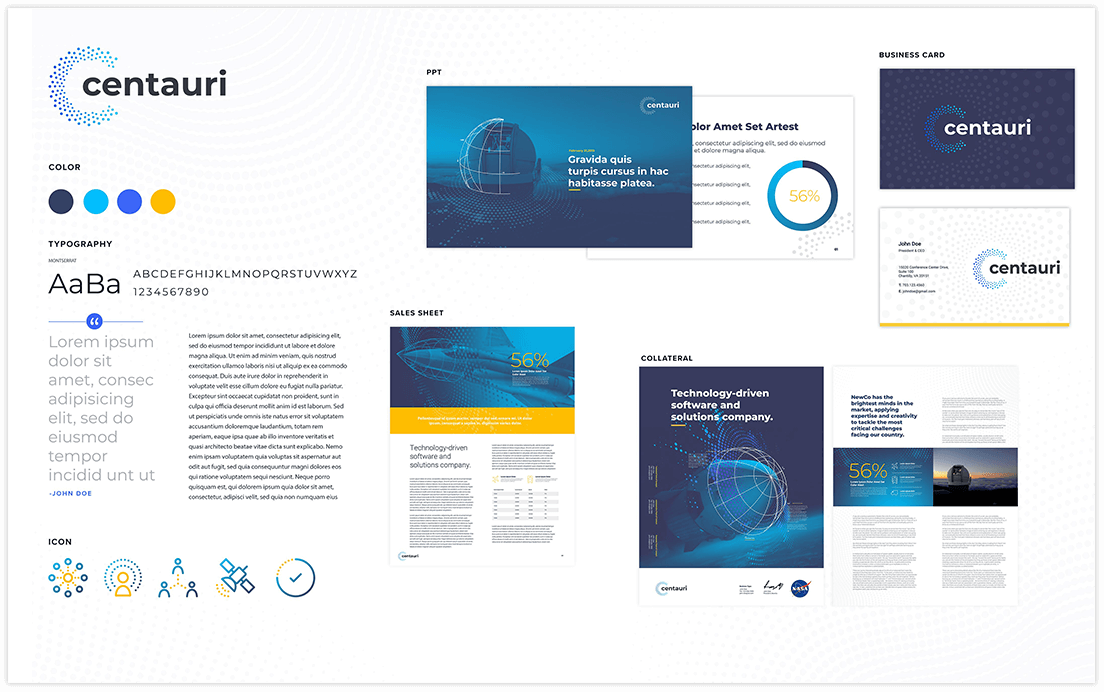
HOW new branding affects the business
Creative brand agencies tend to think of two top considerations for branded materials: internal communications and external marketing. Both are of significant importance to any company, but especially of a newly merged or acquired one.
Well-branded internal communications can serve as a unifier for a new company and its employees, especially if two companies with distinct cultures are merging. Having the same style business cards, Powerpoint templates, or even branded swag creates a sense of kinship amongst colleagues. Especially in larger corporates, consistent brand assets can send a subtle but effective message of cohesion when connecting with new colleagues or other office locations.
The second, slightly more obvious reason for branding is external marketing. Your go-to-market strategy should be reinforced with strong branding and messaging. Whether your primary goal is to appeal to customers, stand out from competitors, or attract talent, you need well-developed marketing materials in your toolkit. Especially when pitching to prospective clients or customers, it would look disjointed and confusing to see conflicting branding across a company’s website, resources, or collateral.

From press announcements to rebranded websites and collateral, Bluetext is a full-service digital marketing agency that can guide your company through than rebrand or M&A process. Contact us to learn more about our services.
Whether you work for a big or a small company, I’m sure you’ve had the question of how to differentiate yourself from the competition. In the ever-growing B2B market, you want your brand to stand above the rest. Easier said than done, right? What if I told you that your market standing could be improved significantly through brand storytelling. Keep reading to learn more and how Bluetext can help you reach your branding goals.
Why Is Brand Storytelling Important For Me?
First of all, storytelling that is consistent with your brand allows your audience to peek behind the curtain to see more than just what you do and sell. Coupled with good company values, storytelling serves to humanize your brand, facilitating connections with your audience and explaining how and why you do and sell the things you do. As your audience gets exposed to your story, they’re more likely to identify with shared values.
While we often like to think fancy data callouts and graphics will convince your audience to convert, at the end of the day studies show we rely heavily on our subconscious feelings. Storytelling gives marketers the ability to share their products and services without diving into a hard sell. This allows your audience to be enticed by your company without being explicitly aware that they were pitched a product/service.

SonicWall
When SonicWall set out to update their messaging and branding to match their top-tier services across a variety of industries, they came to Bluetext. As a cybersecurity marketing agency, we were excited to work with SonicWall to bring their Boundless Cybersecurity to market with a bang. Previous campaigns had attempted to tell the Boundless story, but with muddled messaging and creative that didn’t result in conversions. Bluetext’s branding and creative team were tasked with bringing the Boundless Cybersecurity story to life. The new campaign focused on conveying a feeling of breaking free from cyber threats and thus feeling liberated. To visually communicate this, we designed imagery and messaging that supported this feeling of being free. Campaign ads depict a series of end-users in their industry floating in the air. This not only allows the audience to feel connected to their industry but also the benefits of being freed from the industry-specific challenges. The campaign was a smashing success, bringing a record number of visitors to their campaign landing page.
Why stop there? The Boundless brand story carried onto their annual partner event, which was turned virtual in the wake of COVID-19. Bluetext and SonicWall worked together to promote SonicWall’s Boundless 2020 Virtual event. This event resulted in a 135% increase in attendance over their previous events, going down in history as SonicWall’s largest virtual event ever.
 Trusona
Trusona
Another great example of brand storytelling is Trusona. When Trusona wanted to reimagine their brand presentation and messaging they turned to Bluetext. Priding themselves on creating a secure experience for users without the hassle of passwords, we wanted to deliver a brand that conveyed their hassle-free nature. As with any story, consistency is key.,Bluetext designed a library of brand elements inspired by their logo to be used across all communications. Every time you see a brand element, you’re reminded of the Trusona brand and their brand promise to simplify authentication.
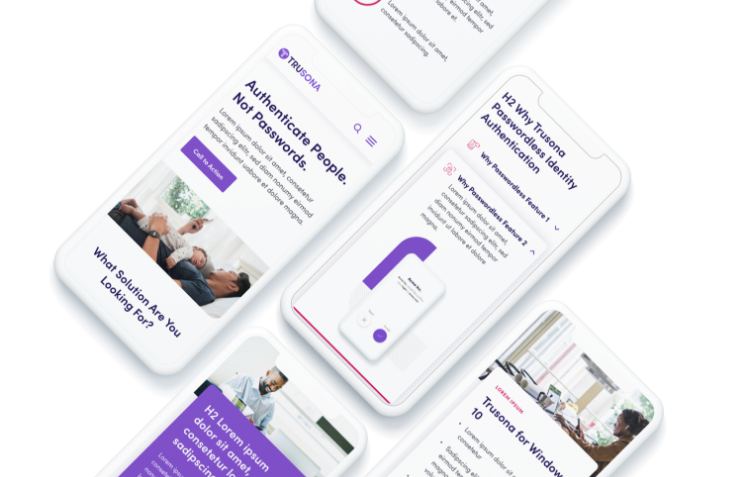
As a digital marketing agency, we’ve worked across industries to learn the most effective ways to convey a story and foster connection. These stories help your audience understand that you are more than just a faceless corporation, but rather a trusted partner.
Are you interested in working with a branding marketing firm to help tell your story? Contact Us!
It’s no secret that after a year of virtual, well, everything, people have entered into a phase of “digital fatigue”. Dr. Alexander Aizman, a New York-based physician and surgeon has coined this term to describe “the physical discomfort that is experienced after prolonged exposure to a digital screen”. Ever been shocked when your iPhone sends your weekly screen time report? It’s no wonder people are growing weary of the time spent on digital devices…
When COVID-19 forced the world online a little over a year ago, device use increased as many calls, events, and other in-person interactions became video conferences. Everything from professional networking, to personal tasks like ordering groceries, quickly pivoted to digital platforms. With people rejecting increasing screen time and looking to alternatives that allow them to avert their eyes, designers must establish a way to create enticing experiences in the midst of digital fatigue.
Cut Down on Blue Light
One way to switch things up is to create an alternative, dark mode experience for users. Dark mode isn’t just a trendy aesthetic, it is actually backed by UX research and health studies to benefit users. The majority of websites we interact with on a daily basis leverage white or light color-dominant backgrounds and excessive exposure to this can cause eye strain, dry eyes, and even disrupt our sleep cycles.

Allowing users to choose their experience, or programming a design that is time responsive, and will automatically update to dark mode for evening and nighttime hours based on the user’s location, can provide a break from all of the white space.
To learn more about ways you could incorporate dark mode into your designs, read our previous blog post.
Break Up the Monotony
Spending the majority of the day on screens and devices of various sizes can become exhausting for a number of reasons. Particularly if you are reading large amounts of online text content. When designers approach a new interface or even just a new landing page, it’s important to always keep the audience, and the environment, in mind.
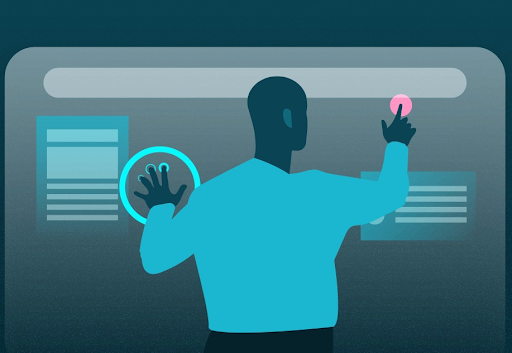
Think of a trip to the museum…it can be a great outing until the initial excitement wears off when each exhibit feels the same. Walking around and reading long content labels, in every roped-off section can only retain attention levels for so long. Yet when there is an interactive exhibit, the interest returns, and the learning and engagement experience offers a higher reward. The same concept applies to online businesses, websites that receive more engagement and interest offer a higher ROI.
Utilizing interactive content, whether it be diagrams, comparison tables, or even simple graphics, can break up long walls of text. Inviting users to interact with content and bringing in visual elements that convey information in easy to grasp and easy-to-understand ways will improve the users’ overall experience.
Introduce Motion and Movement
One notable way to make sure your users connect with content and accompanying design is to create experiences that introduce motion. Static content requires the user to continue scrolling or navigate to other pages and can quickly become repetitive and uninteresting. Incorporating movement into your design as users interact with the page can create a unique experience that will build interest and encourage interaction.
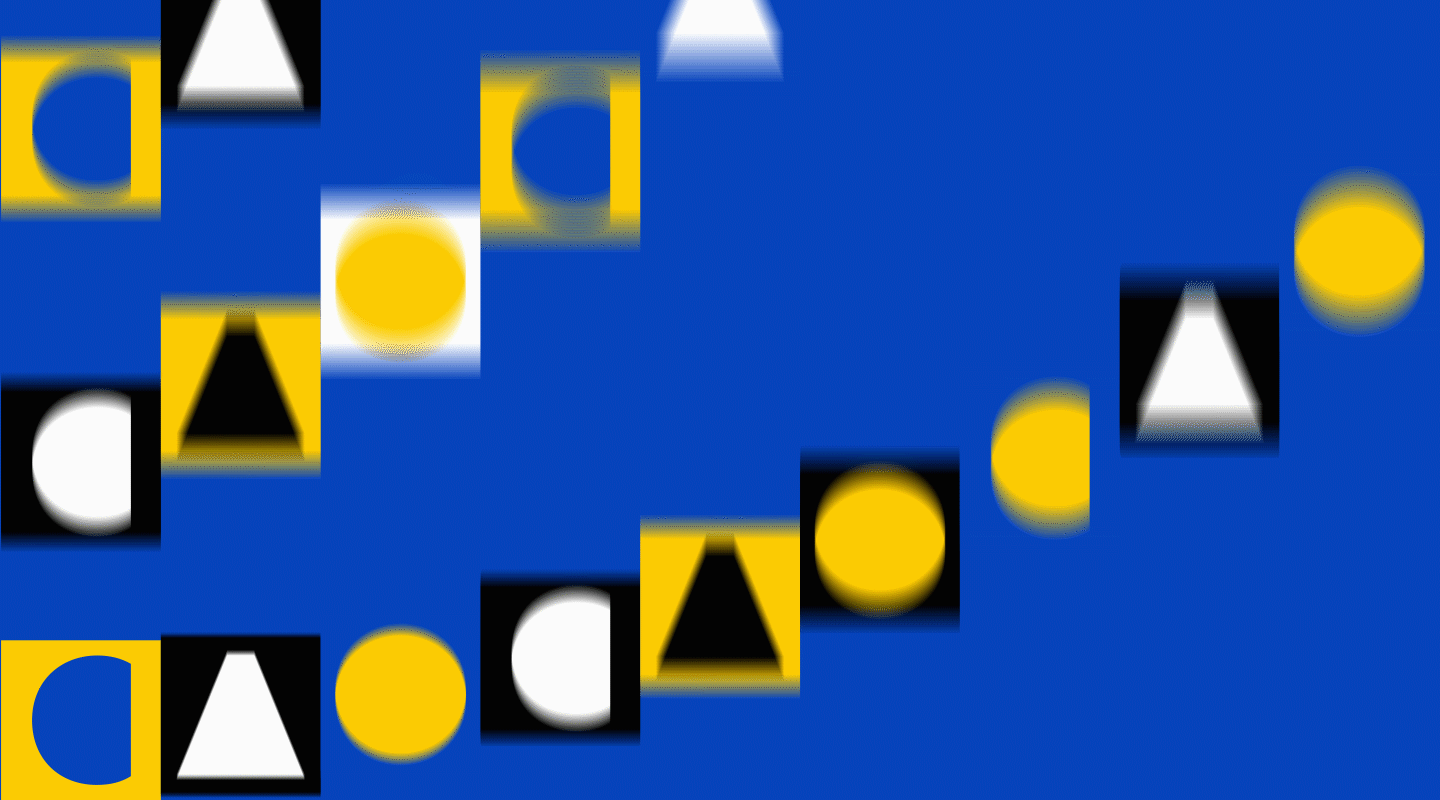
All of the techniques mentioned above bring exciting alternatives to custom designs, and avoiding digital fatigue will ensure users have positive online experiences.
If your website could benefit from a boost in online engagement and website interaction, you’ve come to the right place. Contact Bluetext to learn about our services in UX design, motion graphics and interactive website development.
In a year when in-person events and meetings aren’t possible and Zoom-fatigue has set in, you need a way to virtually interact with your audiences in an engaging way. Here at Bluetext, we’ve spent a lot of time perfecting our digital experience platform to help you connect with your audience. Keep reading to learn more about our briefing centers.
Targeted Audience Experience
As with any experience, you’ll want to tailor it to your specific audience. Whether your goal is to disseminate thought leadership or acquire leads, your messaging and resources should support your goal. While it’s difficult to create a custom experience for each user, our Digital Briefing Center platform supports creating custom virtual experiences for different audiences. This empowers you with the option to create a one-size-fits-all experience or multiple tailored experiences.
While we understand many tailored experiences sounds great, that can easily turn into a lot of content creation and maintenance. That’s why we work with every client to provide experience-based recommendations for your Briefing Center. Ultimately, we recommend leveraging your existing content alongside some tailored content for your audiences. Bluetext has plenty of experience creating content, see some of our work here. As a full-service marketing agency, we will help you create a content marketing strategy to ensure your content is valuable, engaging, and worthwhile for your audience.

User-Approved Design
As with any virtual event, it’s about the experience for your audience. From inception to launch, we’ve worked with our in-house UX experts and our clients to come up with the best design with the end users in mind. That means regardless of the content you end up using, our design will help it shine and push users to convert.
As a user visiting a Briefing Center for the first time, you can expect a welcoming and straightforward design. Here at Bluetext, we prioritize user experience design and go the extra mile to emulate a live in-person experience. For example, what would a user expect at any traditional event? Perhaps to enter a conference center lobby and be directed with agendas and introductions. So why not replicate that across a digital platform? A streamlined user journey is something we provide in any virtual experience, website design, or platform. With the ability to gate the experience for new users, you can capture key contact information for your CRM. As a return user, bypass the gate to access the experience with ease.

Connecting With Tailored Content
Every Digital Briefing Center uses tailored content specifically to meet your audience’s needs. From custom 3D environments to professionally recorded stakeholder briefings, your Briefing Center will convey key messaging in a personalized way. When you can’t meet your prospects in person, at least create the illusion of an in-person experience. Additionally, implementing live video and text chat capabilities can have your team on standby ready to talk with them.
Don’t let custom content intimidate you. Our team has mastered the remote video recording process. Using a comprehensive recording guide and video chats, we walk you through how to professionally capture any speakers you want to host in your experience.
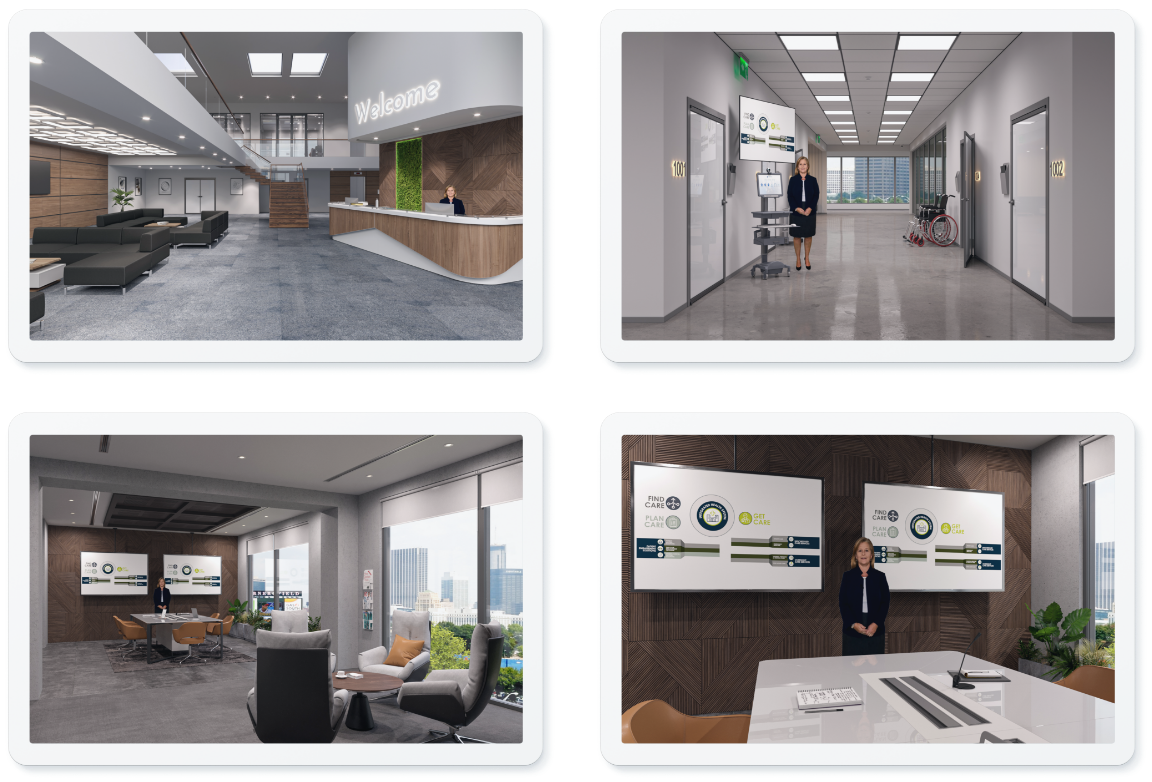
A Partner You Can Trust
So you’ve decided on creating your own digital experience. What comes next? Bluetext has the industry knowledge to guide you step-by-step from discovery to video capture to launch. Want to learn more? Watch our video and contact us today to learn more.
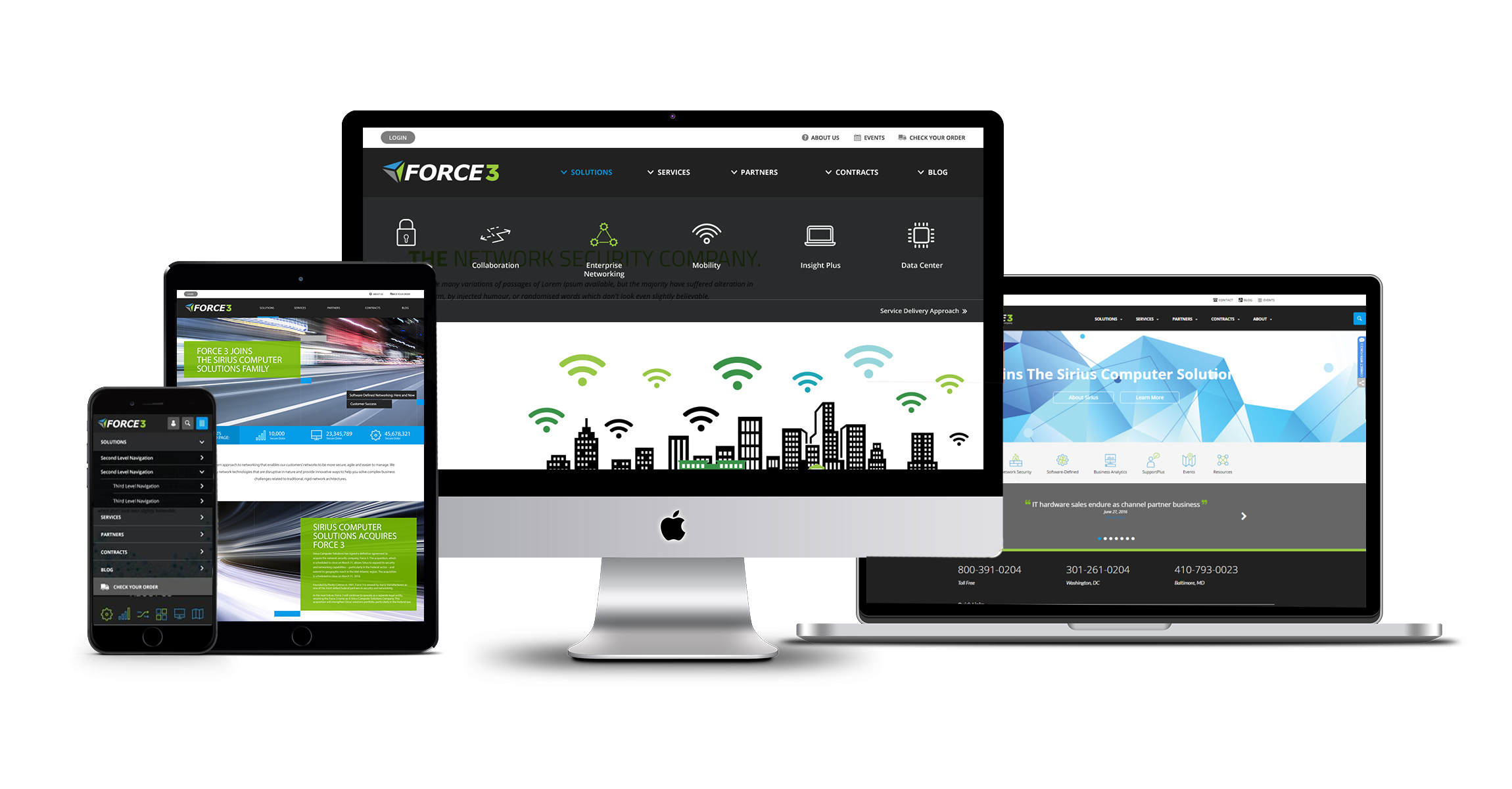
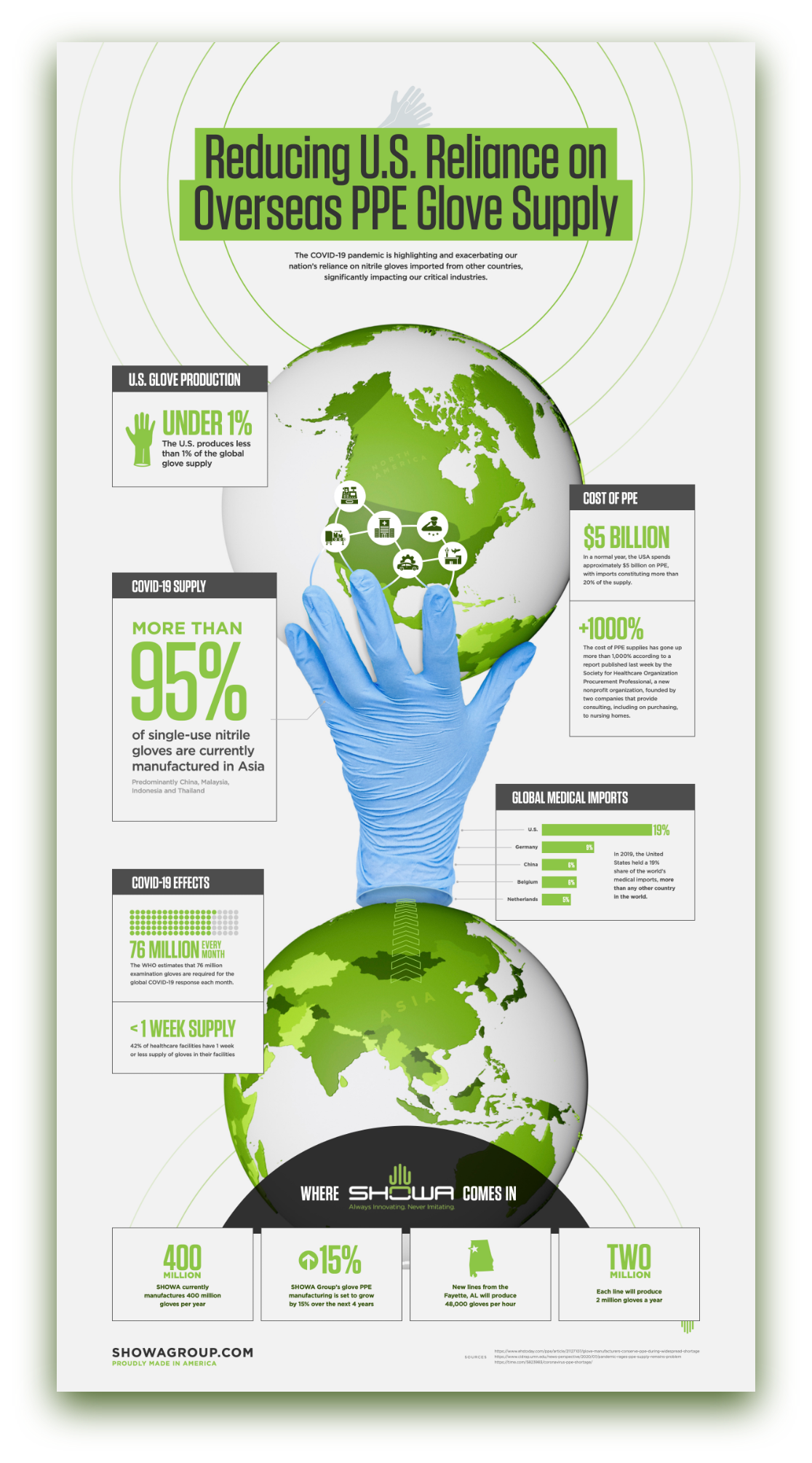
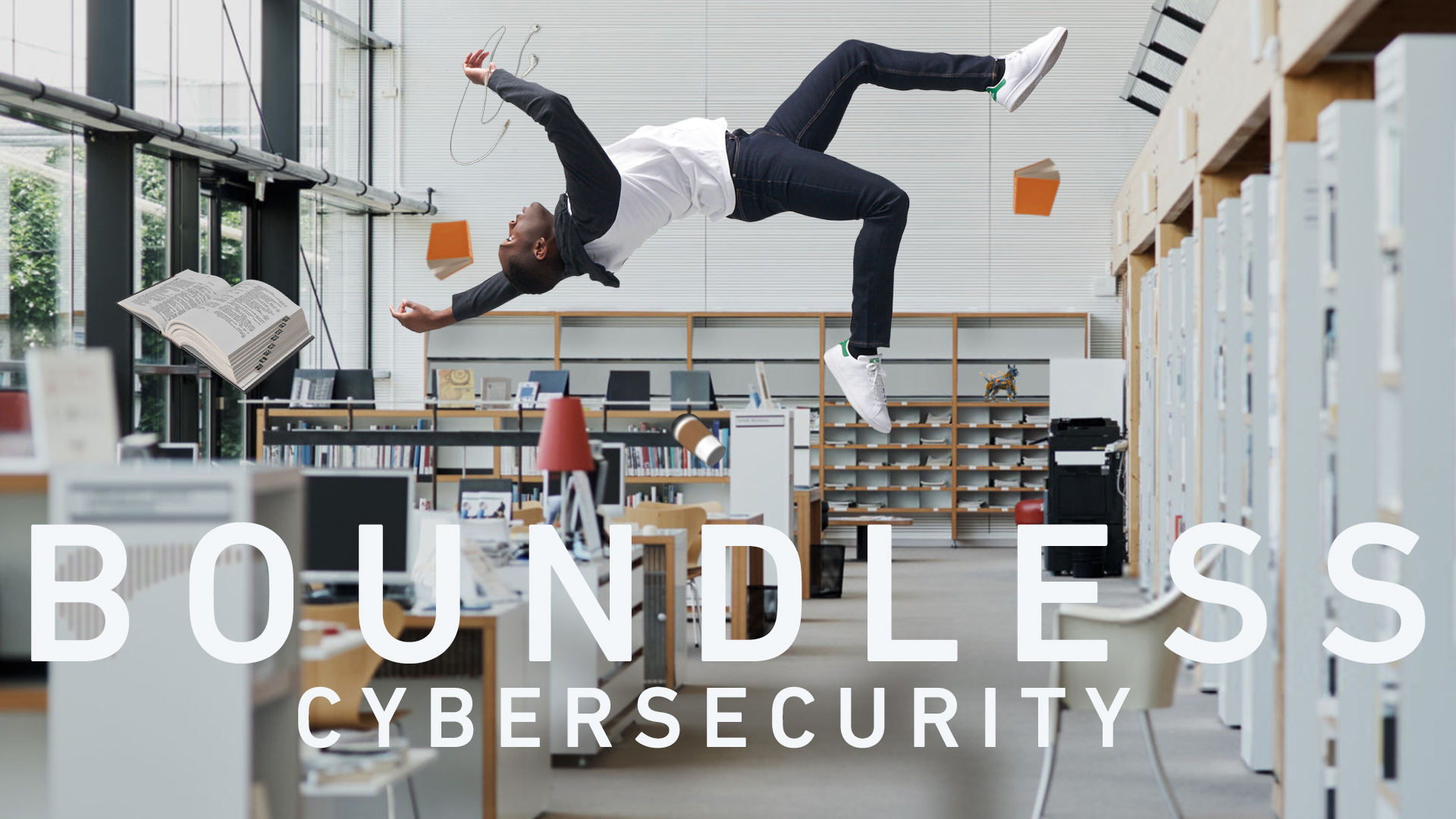 Trusona
Trusona